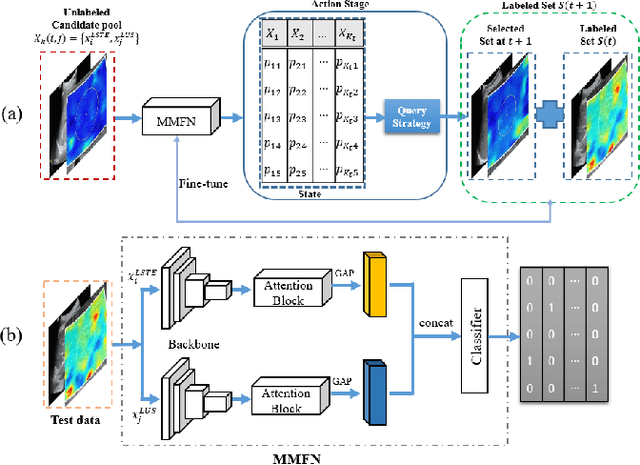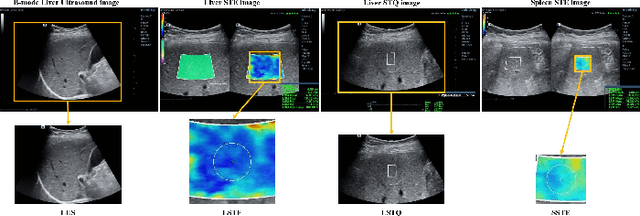Lufei Gao
A Survey on Deep Multi-modal Learning for Body Language Recognition and Generation
Aug 17, 2023



Abstract:Body language (BL) refers to the non-verbal communication expressed through physical movements, gestures, facial expressions, and postures. It is a form of communication that conveys information, emotions, attitudes, and intentions without the use of spoken or written words. It plays a crucial role in interpersonal interactions and can complement or even override verbal communication. Deep multi-modal learning techniques have shown promise in understanding and analyzing these diverse aspects of BL. The survey emphasizes their applications to BL generation and recognition. Several common BLs are considered i.e., Sign Language (SL), Cued Speech (CS), Co-speech (CoS), and Talking Head (TH), and we have conducted an analysis and established the connections among these four BL for the first time. Their generation and recognition often involve multi-modal approaches. Benchmark datasets for BL research are well collected and organized, along with the evaluation of SOTA methods on these datasets. The survey highlights challenges such as limited labeled data, multi-modal learning, and the need for domain adaptation to generalize models to unseen speakers or languages. Future research directions are presented, including exploring self-supervised learning techniques, integrating contextual information from other modalities, and exploiting large-scale pre-trained multi-modal models. In summary, this survey paper provides a comprehensive understanding of deep multi-modal learning for various BL generations and recognitions for the first time. By analyzing advancements, challenges, and future directions, it serves as a valuable resource for researchers and practitioners in advancing this field. n addition, we maintain a continuously updated paper list for deep multi-modal learning for BL recognition and generation: https://github.com/wentaoL86/awesome-body-language.
A Novel Interpretable and Generalizable Re-synchronization Model for Cued Speech based on a Multi-Cuer Corpus
Jun 05, 2023Abstract:Cued Speech (CS) is a multi-modal visual coding system combining lip reading with several hand cues at the phonetic level to make the spoken language visible to the hearing impaired. Previous studies solved asynchronous problems between lip and hand movements by a cuer\footnote{The people who perform Cued Speech are called the cuer.}-dependent piecewise linear model for English and French CS. In this work, we innovatively propose three statistical measure on the lip stream to build an interpretable and generalizable model for predicting hand preceding time (HPT), which achieves cuer-independent by a proper normalization. Particularly, we build the first Mandarin CS corpus comprising annotated videos from five speakers including three normal and two hearing impaired individuals. Consequently, we show that the hand preceding phenomenon exists in Mandarin CS production with significant differences between normal and hearing impaired people. Extensive experiments demonstrate that our model outperforms the baseline and the previous state-of-the-art methods.
Multi-Modal Active Learning for Automatic Liver Fibrosis Diagnosis based on Ultrasound Shear Wave Elastography
Nov 02, 2020



Abstract:With the development of radiomics, noninvasive diagnosis like ultrasound (US) imaging plays a very important role in automatic liver fibrosis diagnosis (ALFD). Due to the noisy data, expensive annotations of US images, the application of Artificial Intelligence (AI) assisting approaches encounters a bottleneck. Besides, the use of mono-modal US data limits the further improve of the classification results. In this work, we innovatively propose a multi-modal fusion network with active learning (MMFN-AL) for ALFD to exploit the information of multiple modalities, eliminate the noisy data and reduce the annotation cost. Four image modalities including US and three types of shear wave elastography (SWEs) are exploited. A new dataset containing these modalities from 214 candidates is well-collected and pre-processed, with the labels obtained from the liver biopsy results. Experimental results show that our proposed method outperforms the state-of-the-art performance using less than 30% data, and by using only around 80% data, the proposed fusion network achieves high AUC 89.27% and accuracy 70.59%.
 Add to Chrome
Add to Chrome Add to Firefox
Add to Firefox Add to Edge
Add to Edge